This page provides an overview of the pricing structure options in Norce Commerce. It explains how to manage product pricing, modify prices during the shopping process, and select the best approach for your business needs. Each section is self-contained and includes context, pros and cons, and links to more detailed resources.
Norce Commerce supports multiple pricing models to suit different business requirements. These include standard prices, market-specific prices, campaign prices, contract pricing, quotations, and loyalty pricing. Each model is described below with its use cases and implementation details.
Standard prices serve as the baseline for all other pricing models. They are the starting point for discounts, exceptions, and market adjustments. Norce Commerce offers two main ways to define standard prices and assortments:
Description:
A cost-based standard price list calculates sale prices from product cost information, such as supplier or ERP/WMS unit costs. Pricing rules can be managed in the Admin UI, allowing "cost plus" or "margin" rules to be applied globally or to specific products.
Visual:
Image showing a cost-based standard price list structure.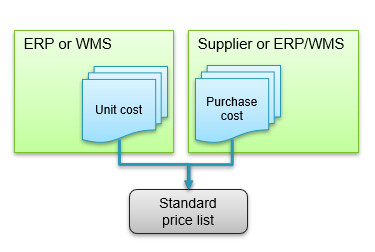
Pros and Cons:
| Pros | Cons |
|---|---|
| Visibility and control on your margins | Unable to set prices based on BOM or other manufacturing information |
| Dynamically changing prices |
Further Reading:
- Working with cost-based pricing rules
- Pricing in admin
Description:
Some clients require standard prices to mirror complex pricing logic already implemented in their ERP system (e.g., manufacturing with bills of materials). Norce Commerce can synchronize these calculated sale prices using full or incremental feeds.
Visual:
Image showing ERP-maintained standard price lists.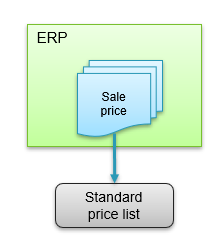
Pros and Cons:
| Pros | Cons |
|---|---|
| Complex pricing logic is managed in ERP and only results are integrated | Performance challenges for large assortments if ERP batch calculations are slow |
| Existing ERP price calculations are reused | Price changes in Norce are overwritten on next ERP sync |
| Investments in ERP pricing logic are preserved |
Further Reading:
- Working with fixed price pricing rules
- Pricing in Admin
Market prices allow you to define pricing strategies for different brands, regions, or currencies. This section covers two approaches: inherited market price lists and independent market-specific price lists.
Description:
Market price lists inherit from the standard price list. You can define rules to include/exclude products or apply discounts based on the standard price. Currency conversion is automatic if needed.
Visual:
Image showing market price list inheritance.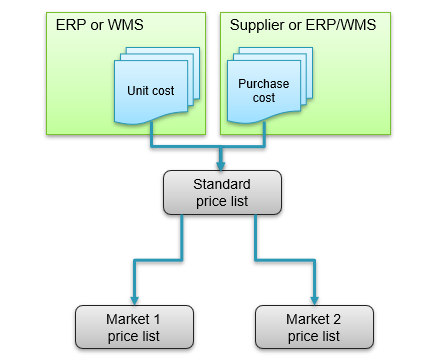
Pros and Cons:
| Pros | Cons |
|---|---|
| Flexible market definitions and pricing | All rules are based on a standard price list, reducing flexibility compared to independent lists |
Further Reading:
- [Add links to more resources]
Description:
Each market can have its own independent standard price list, managed using cost-based or ERP-maintained methods. There is no relationship between markets in Norce; each operates independently.
Visual:
Image showing independent market-specific price lists.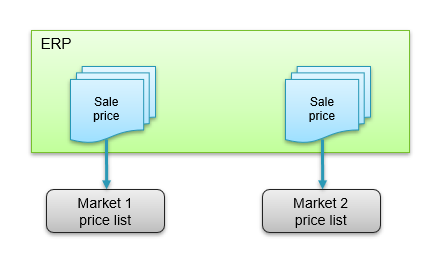
Pros and Cons:
| Pros | Cons |
|---|---|
| Total flexibility for each market | No relational rules; each market must be maintained independently from source systems |
Further Reading:
- [Add links to more resources]
Description:
Set prices based on competitor pricing by importing competitor price data. Norce Commerce can apply rules to ensure your prices are always better than selected competitors for specific segments.
Visual:
Image showing competitor-based pricing structure.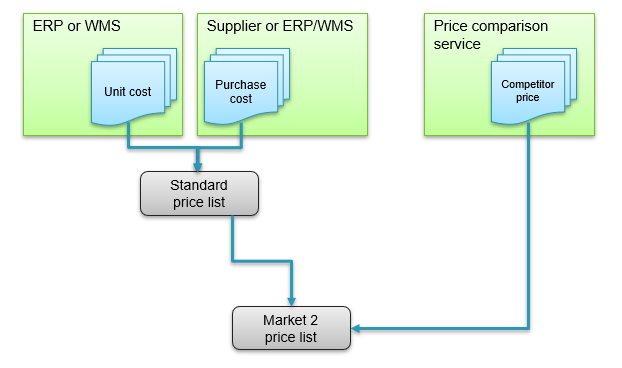
Pros and Cons:
| Pros | Cons |
|---|---|
| Automatic, self-maintained target pricing | Can add complexity to pricing structure |
| Less control over profit margins |
Further Reading:
- [Add links to more resources]
Campaign prices enable temporary discounts for specific products or customer groups. This is separate from standard, market, or contract pricing, making it easy to revert to default prices and display campaign prices to customers.
Description:
Campaign price lists are based on standard or market prices, with defined start and end dates. They allow exporting product catalogs with campaign prices for external feeds.
Visual:
Image showing campaign price list structure.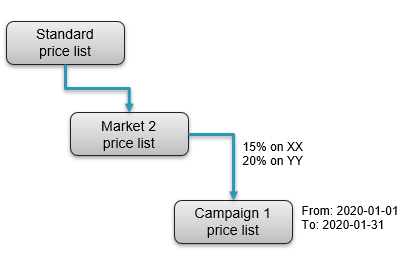
Pros and Cons:
| Pros | Cons |
|---|---|
| Campaigns follow parent price changes and can be exported | Prices are based on parent data and do not consider other buying contexts (e.g., buyer behavior, basket contents) |
Further Reading:
- Working with campaign price lists
Description:
Promotions use Norce Commerce's rule-based engine to apply campaign effects at checkout. Examples include free shipping, buy-one-get-one, and discount codes.
Pros and Cons:
| Pros | Cons |
|---|---|
| Flexible, instant campaign effects | Offers exist only during checkout and cannot be exported as product prices |
Further Reading:
- Working with promotions
Contract pricing supports customer-specific prices and assortments, reflecting agreements with clients, distributors, or manufacturers.
Description:
Price lists can be linked to customers or companies. When a visitor identifies themselves, Norce calculates prices using both public and customer-specific lists.
Pros and Cons:
| Pros | Cons |
|---|---|
| Customers see their own prices and assortments | Large numbers of customers and price lists increase calculation and integration complexity |
Further Reading:
- Working with customer specific prices
Description:
Virtual price lists are calculated in real-time for each customer, reducing data storage and improving performance for large B2B clients. Some features are not supported (e.g., customer-specific assortments).
Pros and Cons:
| Pros | Cons |
|---|---|
| Reduces data calculation and integration | Not all price methods/features supported (e.g., no customer-specific assortment, no fixed product prices) |
| Better performance for large B2B clients |
Further Reading:
- Working with virtual price lists
Description:
Company discounts are percentage-based rules applied after price list calculation. They can target the entire assortment, categories, or discount classes.
Pros and Cons:
| Pros | Cons |
|---|---|
| Good performance compared to price lists | Less flexible than price lists |
| Simpler than customer-specific price lists |
Further Reading:
- Working with company discounts
Manual pricing is sometimes needed for unique sales situations, such as providing a custom quotation to a customer.
Description:
Manual prices can be set in the basket by business logic, enabling flexible, client-specific sales tools.
Pros and Cons:
| Pros | Cons |
|---|---|
| Highly flexible | No other discounts can be used for basket rows with manual prices |
Further Reading:
- Manual prices in a basket
Loyalty pricing encourages repeat purchases by offering special prices to returning customers. Norce Commerce supports several loyalty pricing strategies.
Description:
Non-public price lists are assigned to customers who meet specific criteria (e.g., VIP club). The front-end application adds the correct price lists when the customer is identified.
Pros and Cons:
| Pros | Cons |
|---|---|
| Pricing can be exported to other targets | Requires additional business logic in the front-end application |
Further Reading:
- Working with price lists
Description:
The promotion engine can apply loyalty offers, such as unique discount codes or customer-flag-based promotions.
Pros and Cons:
| Pros | Cons |
|---|---|
| Offers can be more than just price discounts and are applied to baskets | Not applicable to product exports |
Further Reading:
- Working with promotions
Description:
Norce Commerce can integrate with external loyalty systems (e.g., CRM with vouchers). The front-end applies manual prices in the basket, and loyalty references can be passed to the ERP system.
Pros and Cons:
| Pros | Cons |
|---|---|
| Flexible | Cannot be combined with other discounts |
Further Reading:
- Manual prices in a basket
For clients who already have a loyalty system in place, such as a CRM that handles vouchers or one-time discounts based on past sales, Norce Commerce can integrate with these systems by allowing the front-end business logic to change prices in a basket with manual prices. In this scenario, Norce does not calculate the new price, but instead gets it from the external loyalty system. Typically, a reference to the loyalty item is sent in, so that the rebate is traceable. Add an info type to the basket item where this reference is passed to the ERP system.
| Pros | Cons |
|---|---|
| Flexible | Cannot be combined with other discounts. |
- Manual prices in a basket